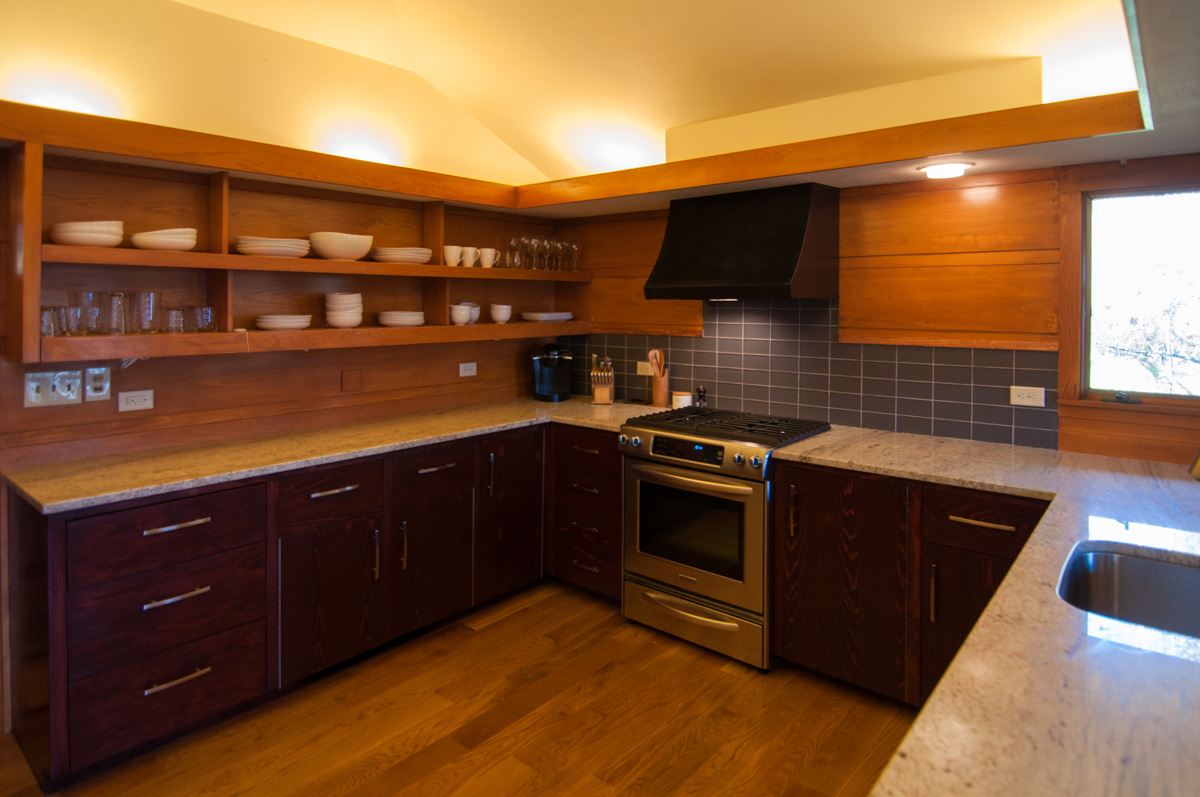Frank Lloyd Wright’s Kitchen Design Philosophy

Frank Lloyd Wright, a renowned architect known for his innovative and forward-thinking designs, revolutionized the way kitchens were conceived and built. His architectural principles, particularly his commitment to organic architecture and the Prairie School style, deeply influenced his approach to kitchen design.
Integration with the Surrounding Landscape
Wright believed in creating a harmonious relationship between the built environment and the natural world. His kitchens often featured large windows that brought the outdoors in, blurring the lines between interior and exterior spaces. This seamless integration of nature into the kitchen was a defining characteristic of his work. The use of natural materials, such as wood and stone, further enhanced this connection.
Distinctive Features of Wright’s Kitchen Cabinets

Frank Lloyd Wright’s kitchen cabinet designs were more than just storage solutions; they were integral parts of his architectural philosophy, emphasizing functionality, natural materials, and harmonious integration with the surrounding space.
Built-in Designs and Integration
Wright believed in creating spaces that flowed seamlessly, and his kitchen cabinets reflected this principle. He favored built-in designs that were seamlessly integrated into the walls and the overall architecture of the house. This approach created a sense of unity and continuity, eliminating the visual clutter often associated with freestanding cabinets.
Use of Natural Wood
Wright’s deep respect for nature extended to his choice of materials. He preferred using natural woods like oak, cherry, and maple for his kitchen cabinets. These woods not only possessed durability and longevity but also brought warmth, texture, and a sense of organic beauty to the space.
Materials and Aesthetics
The choice of wood was crucial in achieving the desired aesthetic. Oak, with its robust grain and rich color, provided a sense of solidity and permanence. Cherry, known for its warm reddish hues and subtle grain, exuded elegance and sophistication. Maple, with its lighter tones and fine grain, brought a sense of airiness and brightness to the kitchen.
Appliance Integration
Wright’s approach to kitchen design went beyond mere aesthetics; it focused on functionality and efficiency. He integrated appliances seamlessly into the cabinetry, eliminating the need for bulky, standalone units. This streamlined design not only maximized space but also created a more cohesive and visually appealing kitchen.
Impact and Legacy of Wright’s Kitchen Cabinets: Frank Lloyd Wright Kitchen Cabinets

Frank Lloyd Wright’s kitchen designs, with their emphasis on functionality and aesthetics, have left an enduring mark on modern kitchen design. His principles of natural materials, open layouts, and seamless integration of appliances continue to inspire contemporary architects and designers.
Enduring Influence on Modern Kitchen Design
Wright’s kitchen designs were revolutionary for their time, challenging the traditional compartmentalized kitchen layout. His open floor plans, with integrated dining and living areas, created a sense of spaciousness and flow. The use of natural materials, such as wood and stone, brought a sense of warmth and authenticity to the kitchen. This approach, which prioritized functionality and harmony with the surrounding environment, laid the groundwork for modern kitchen design.
Contemporary Kitchens Inspired by Wright, Frank lloyd wright kitchen cabinets
Wright’s principles of natural materials, open layouts, and seamless integration of appliances have resonated with contemporary kitchen designers.
- Minimalist Kitchens: The clean lines and simple forms of Wright’s designs are reflected in minimalist kitchens, characterized by sleek cabinetry, open shelving, and a focus on functionality.
- Modern Farmhouse Kitchens: The use of natural materials, such as wood and stone, in Wright’s designs is evident in modern farmhouse kitchens. These kitchens often feature exposed beams, reclaimed wood countertops, and a rustic aesthetic.
- Open-Concept Kitchens: Wright’s vision of open floor plans, with seamless transitions between living spaces, is a defining feature of contemporary open-concept kitchens. These kitchens often incorporate islands, breakfast bars, and integrated seating areas.
Right, so you’re into Frank Lloyd Wright kitchen cabinets, eh? They’re proper swish, but you know what’s even more peng? Getting some cheap bedroom doors at Lowe’s for a sick bedroom makeover. Then you can have a proper chill out zone with a touch of that FLW vibe in your kitchen, yeah?
Frank Lloyd Wright’s kitchen cabinets were all about clean lines and functionality, but I reckon they wouldn’t have stood a chance against a cat’s claws. Imagine trying to sleep when your furry mate is going mental, scratching the bedroom door at night like they’re trying to break in! It’s like they’re trying to tell you something , but all you can hear is the sound of their claws scraping against the wood.
Back to the cabinets, though, Wright’s designs were all about simplicity and natural materials, so maybe he’d have just built a scratching post into the kitchen island instead.
